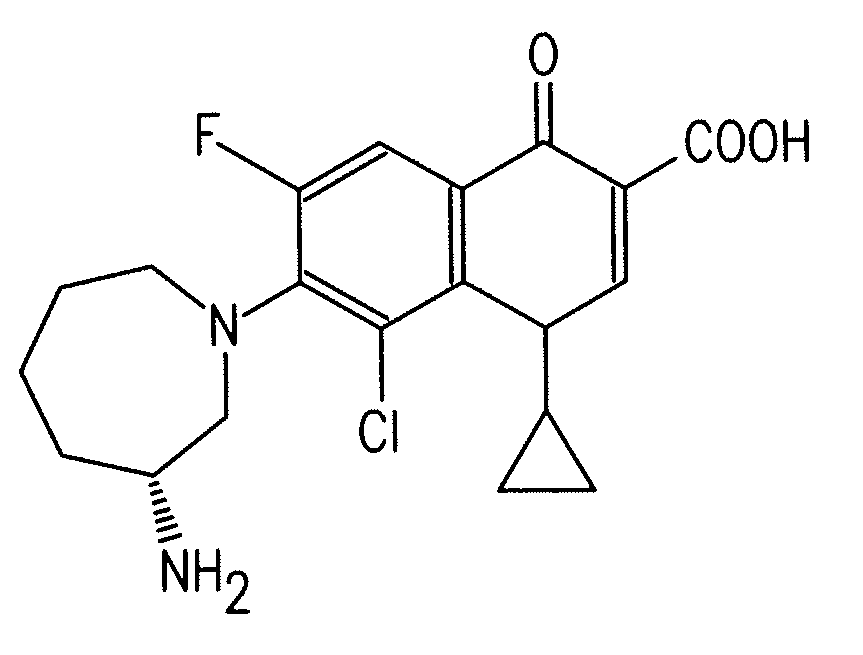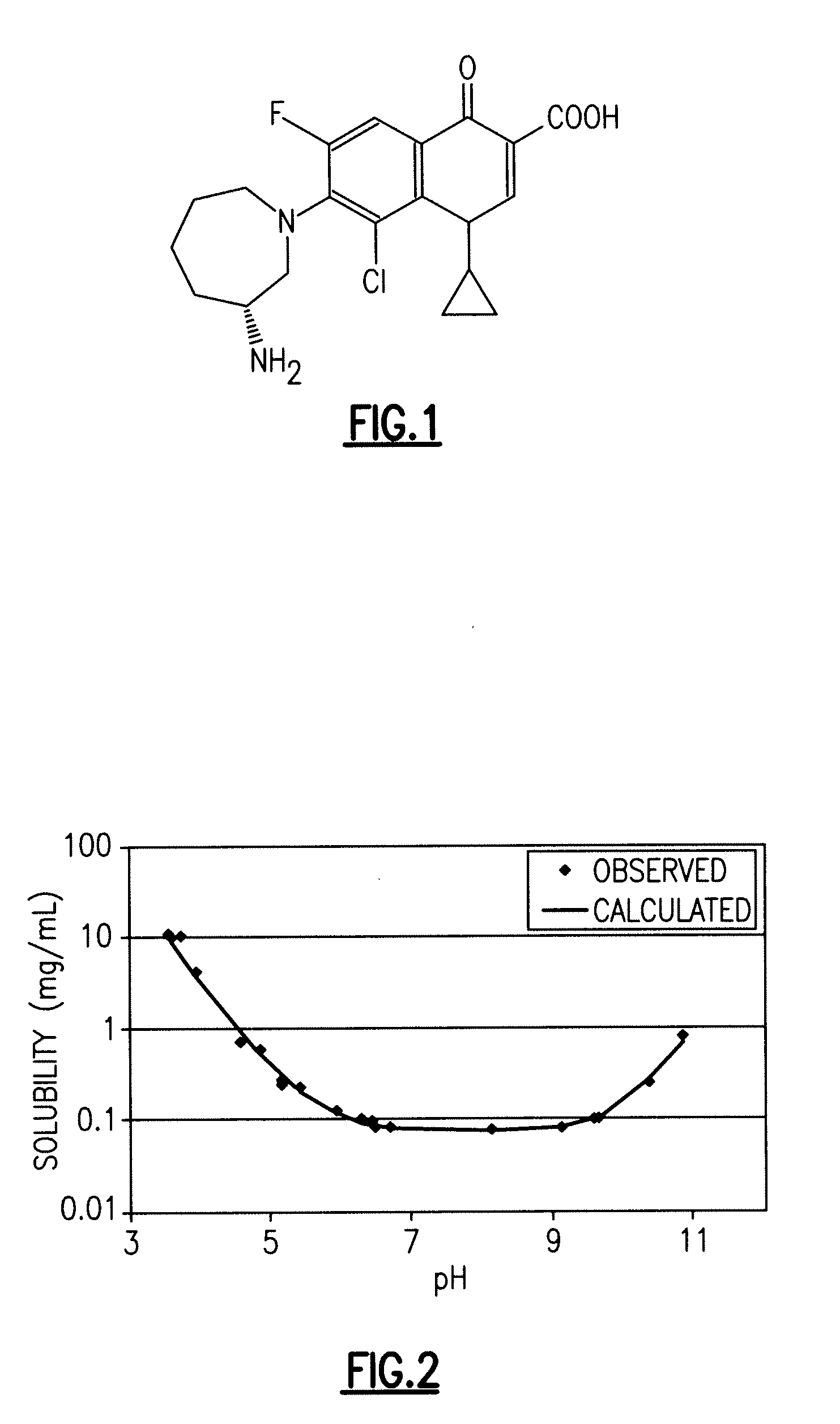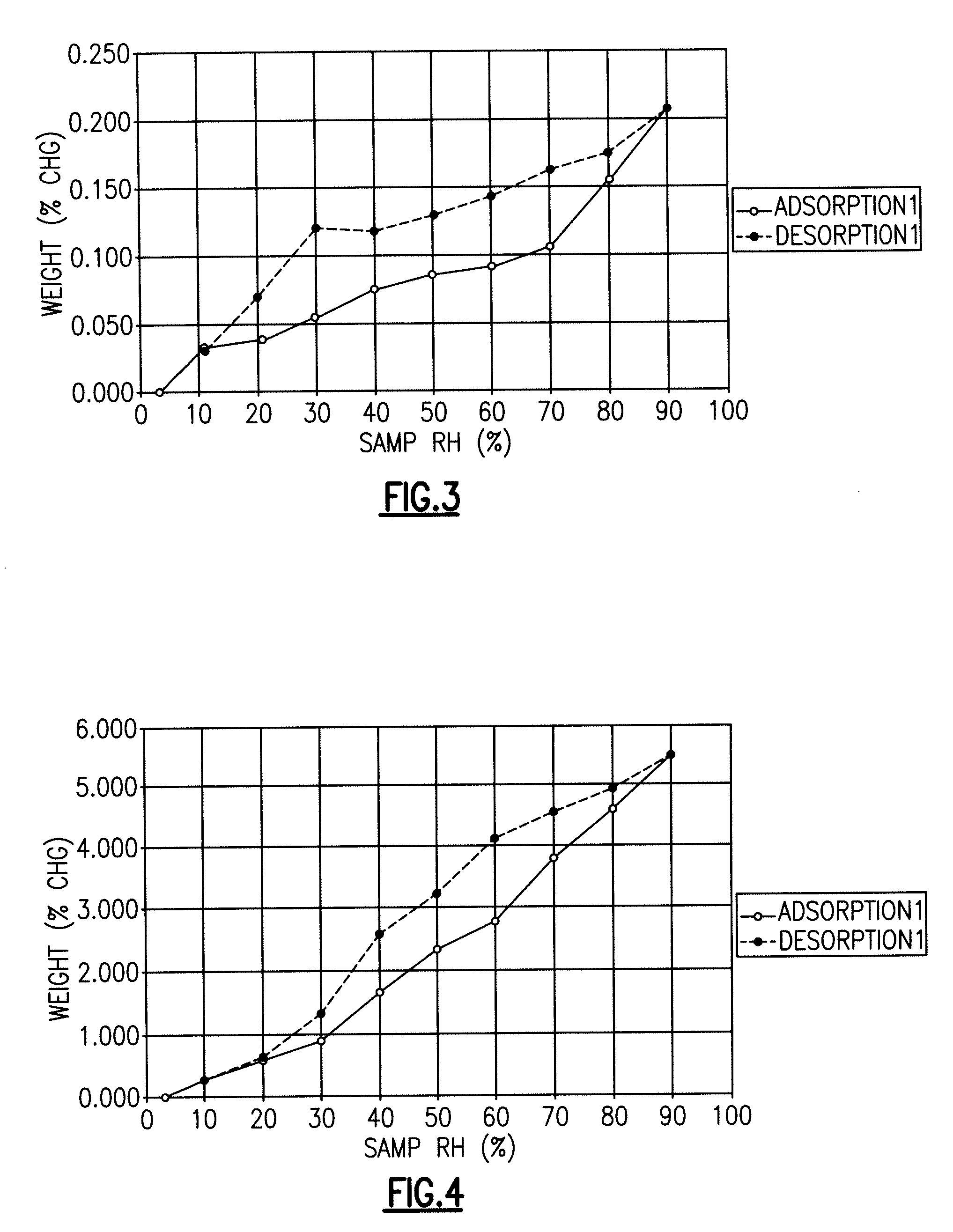Fluoroquinolone Carboxylic Acid Molecular Crystals
a technology of fluoroquinolone and molecular crystals, which is applied in the field of fluoroquinolone carboxylic acid molecular crystals, can solve the problems of only showing deficient effects on intractable diseases, low antimicrobial activity against gram positive microorganisms, and only providing low bioavailability of synthetic antimicrobial agents, so as to achieve the effect of increasing the free base conten
- Summary
- Abstract
- Description
- Claims
- Application Information
AI Technical Summary
Benefits of technology
Problems solved by technology
Method used
Image
Examples
example 1
[0146]
TABLE 5IngredientAmountCarbopol 934P NF1gPropylene glycol5gEDTA0.1mgbesifloxacin micro particles0.6gPurified waterq.s. to 100g
[0147]An appropriate proportion of EDTA (e.g., shown in Table 5) is added to purified water in a stainless steel jacketed vessel that is equipped with a stirring mechanism. An appropriate amount of carbopol 934P NF is added, over a period of five to ten minutes to form a substantially uniform dispersion. Propylene glycol is added to the resulting mixture while mixing for three to ten minutes. Then, an appropriate amount to besifloxacin, which may be previously micronized, is added to the contents of the vessel over a period of three to five minutes while mixing continues until the compound is substantially dispersed. The pH of the mixture is adjusted to 6.4-6.7 using 1 N NaOH. The final composition is sterilized, using, for example, heat or radiation and then packaged in appropriate containers.
example 2
[0148]A procedure similar to that disclosed in Example 1 is used to produce the composition of the present invention having the ingredients listed in Table 14.
TABLE 6Amount (% by weight, exceptIngredientwhere “ppm” is indicated)Povidone1.5HAP (30%)0.05Glycerin3Propylene glycol3besifloxacin microparticles0.7Alexidine 2HCl1-2ppmPurified waterq.s. to 100
Note: “HAP” denotes hydroxyalkyl phosphonates, such as those known under the trade name Dequest®. HAPs can be used as chelating agents and have been shown to inhibit bacterial and fungal cell replication.
example 3
[0149]A procedure similar to that disclosed in Example 1 is used to produce the composition of the present invention having the ingredients listed in Table 7.
TABLE 7Amount (% by weight, exceptIngredientwhere “ppm” is indicated)Glycerin3Propylene glycol3Besifloxacin microparticles0.4Polyquat-11-10ppmSunflower oilq.s. to 100
PUM
| Property | Measurement | Unit |
|---|---|---|
| pKa | aaaaa | aaaaa |
| pKa | aaaaa | aaaaa |
| solubility | aaaaa | aaaaa |
Abstract
Description
Claims
Application Information
 Login to View More
Login to View More - R&D
- Intellectual Property
- Life Sciences
- Materials
- Tech Scout
- Unparalleled Data Quality
- Higher Quality Content
- 60% Fewer Hallucinations
Browse by: Latest US Patents, China's latest patents, Technical Efficacy Thesaurus, Application Domain, Technology Topic, Popular Technical Reports.
© 2025 PatSnap. All rights reserved.Legal|Privacy policy|Modern Slavery Act Transparency Statement|Sitemap|About US| Contact US: help@patsnap.com



